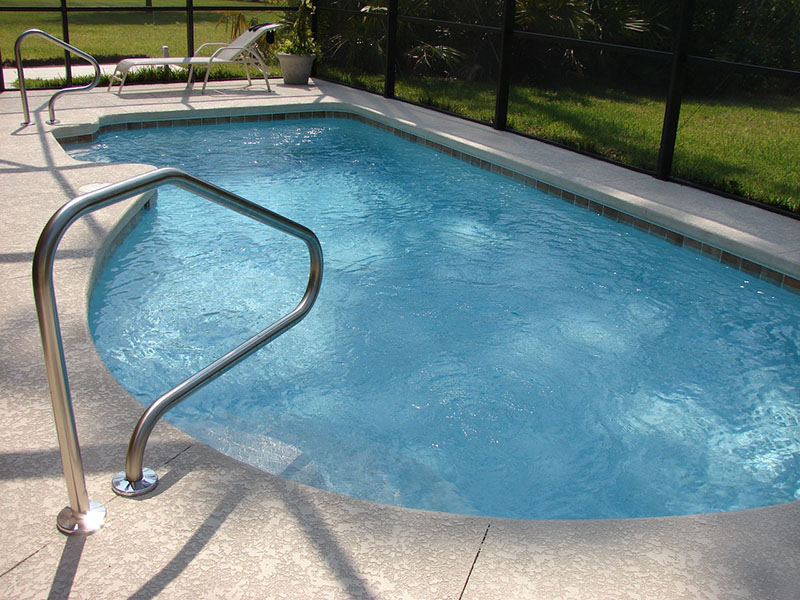Every year, new pool owners fill their pool up for the first time, use it for the season, and then aren’t quite sure what to do with their pool water once the weather starts getting colder.
The most common mistake they make is to simply drain the pool. Beginner pool owners cite such reasons as: the pool won’t be in use for a significant period of time and they don’t want to maintain it anymore, the pool water has turned green and they want to do a comprehensive annual clean, or they added too many chemicals and want to get rid of some.
These all seem like very valid reasons to drain the pool, but the truth is that most issues can be solved without draining the pool, and that draining a pool can damage it. There are very specific instances where you need to drain the pool, and in those instances you should call a professional pool company to drain it for you.
In this article, I will discuss the consequences of draining both above-ground and inground pools to help you better understand what you’re risking each time you empty your pool.
Draining an inground pool
It is generally not a good idea to drain your inground pool. The most commonly cited reasons for doing so relate to pool maintenance. However, emptying the pool improperly can increase the Total Dissolved Solids (TDS) in your pool.
This makes it harder for the chlorine to neutralize contaminants and can result in eye and skin irritation, as well as metal corrosion of surrounding pool equipment. Draining also increases the likelihood of brown manganese stains, calcium deposits, and overall pool deterioration.
If you want to clean your pool, find a way to do it while the water is still in the pool, not out of it. If you aren’t sure how this can be accomplished, then hire a pool professional.
You should only ever drain your inground pool if there are repairs that need to be made that cannot be done while the pool has water in it, or if you want to stabilize your pool’s TDS.
Inground vinyl liner pools
Inground vinyl liner pools are only able to remain standing as long as they are filled with water. The water can exert outwards pressure to help the pool stay standing. As soon as they are empty, they no longer have the ability to hold back the weight of the earth around them and the walls will collapse.
If groundwater makes its way under the vinyl liner, then the liner can start to float. Sometimes vinyl liner pools can unintentionally get drained if the liner is punctured for any reason.
Furthermore, vinyl liners typically have a lifespan of only 10-15 years and will need to be replaced at some point.
Fiberglass pools
Fiberglass pools are installed by first digging a hole that is larger than the shell, placing the shell in the hole, then backfilling the remaining space with dirt.
Since the water weight is considerably heavier than the weight of the fiberglass shell, it needs to be filled to help keep the shell in the ground. If the water is emptied, then there is a risk of the shell popping out due to the hydrostatic pressure of the groundwater beneath.
This causes significant damage to the pool shell and the surrounding area.
Inground concrete pools
Concrete pools are much heavier than fiberglass pools and are structurally able to withstand the weight of the earth surrounding it and are much more resistant to water pushing outward on the shell.
However, if there is sufficient groundwater and it reaches high enough, concrete pools are still susceptible to getting pushed out of the ground. This is known as “pool popping”. And once a pool has “popped”, it cannot go back into the ground.
Draining a concrete pool will also likely damage the plaster if the temperature is high enough and the surface doesn’t remain wet. Plaster is intended to be wet all the time and is even cured underwater.
When it is dry, it will contract. When rehydrated, it will rapidly expand and risk delaminating or cracking.
Draining an above-ground pool
Some arguments can actually be made in favor of draining an above-ground pool. For instance, if you plan on replacing your pool liner, then you have to drain the pool.
Leaving an above-ground pool empty for more than a day or two is risky because the liner might shrink when dry, stretch when dehydrated, or otherwise weaken in some way. However, if your goal is to replace the liner, then it doesn’t matter if the old one gets damaged and you can safely drain the pool and install a new liner.
Furthermore, some above-ground pools cannot withstand being left outside in the winter. In that case, you must drain your pool, clean it, disassemble and dry off the components, and store it in a cool, dry location until swimming season is back.
Pool draining tips to avoid damage
- Temperature: The best time to do any repairs or resurfacing work is when it’s below 85F.
- Timeframe: Never leave your pool empty for more than a day or two. The plaster can dry out, the walls will be under pressure from the dirt around it, the pool’s foundation can shift now that there is not as much weight on it, and the pool itself can literally pop out.
- Professional help: Even if you think you have a good reason to drain your pool, you should not do it yourself. A professional may find a way to solve the problem without draining it. Plus, they have tools to safely drain the pool in the event that the problem can only be solved by emptying the pool.


